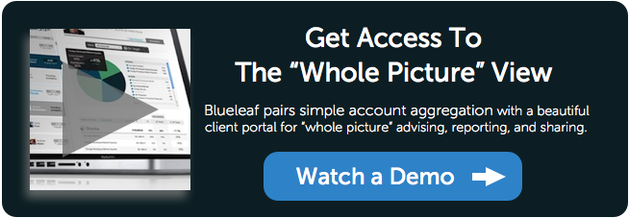Last Updated on July 20, 2020 by John Prendergast

The first time one of my clients died was July 2008.
He was my “most difficult” client. He asked the difficult and time consuming questions. He wanted to learn and understand the deepest details about what we did. Despite his attention and mine, neither of us expected what happened next.
The phone call I received that day was from his step-son. My clients’ widow needed a broad understanding that there was more than enough to support her even without life insurance. He said they were told to contact me. It turned out to be an extremely difficult conversation.
In my eyes, I failed his family in the days and weeks after he passed away.
The problem was that we didn’t know the details of all his accounts. We only knew some. There was a Thrift Savings Plan and we managed his two Schwab accounts. But we didn’t know about the checking, savings, CDs and other outside brokerage accounts. I relied on the widow provide us with account statements as they were delivered. It was a slow, painful process for both parties. I was blind to so much.
Turns out, what you don’t know can hurt you.
Death is a traumatic time period. It involves the loss of a loved one, dramatic change, and ongoing uncertainty. It also involves the loss of information.
Think about all the things that you know about your private life that others – probably including your spouse – don’t know. You know your passwords. You know who to contact when the gutters need to be cleaned. You know when the property tax bill is paid. You know where the financial accounts are held. You know how bills are paid. When you die, all that information is extremely difficult to find, or lost altogether.
But the problem is many advisors (like myself, at the time) don’t have the information necessary to be truly helpful in this final stage. Or they are leading from behind on what is necessary to assist the family after the loss of a client.
The financial planning profession has grown up with our clients. We were with them as they purchased life insurance to protect their young families. We helped them navigate the opportunities in their corporate retirement plans. We discussed withdrawal rates and the tax advantages of Roth conversions. And if we do our job right, we’ll be there till the end.
It’s not 2008 anymore. Time to fix this.
Imagine the relief a widow/widower would have if, after losing their spouse, you are able to hand them the important details of all the financial accounts. No waiting for months of mail to collect various statements. No more walks down to the mailbox to see if another piece of information had been delivered. No more hassle.
Instead, you hand them the details right away. You help provide information and knowledge to a client in their weakest moment. You have lifted part of the unknown. You have done what the client needed. And your decision to invest in data aggregation has provided that relief.
Account aggregation is changing how we serve our clients. It’s having an impact by providing clients with a clean, simple way to see their total financial picture – constantly updated. At the same time, it’s giving you, the advisor, information and knowledge you need to serve them now and to serve their spouse or kids in the future. Plus, if your aggregation is imbedded into a client portal, there’s no need to “hand them” anything. The whole household is already set up to see every account, where it is, and how much is in it. This is what Blueleaf does, along with other capabilities such as a “Sharing” feature so the family can easily share their portal with an attorney, too.
No matter how the information is accessed, you have the task of proving important information to your clients the moment they need it, just as the profession has done over the last 40 years.
Looking back, this difficult client helped drive me to where I am today. The experience I had with his family after his death forced me to learn a hard lesson that has improved my service completely. Today, they remain great clients.
I encourage you to ask yourself, “What am I blind to?” and begin to close that gap, now. After all, when it comes to client accounts, what you don’t know CAN hurt you.
